Does My Dog Need a Root Canal?
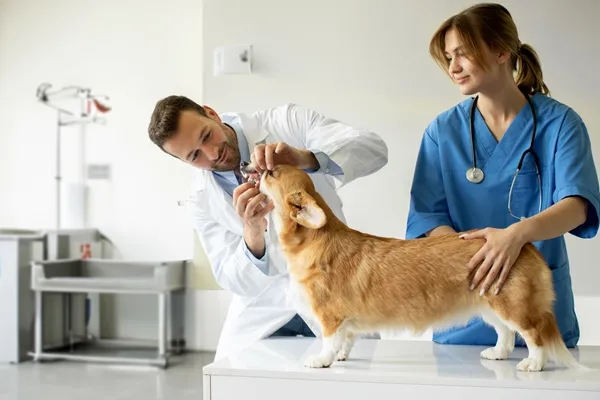
When a tooth is broken with the pulp exposed, there are only two choices for treatment: root canal therapy or extraction. Root canal therapy involves removing the pulp from the center of an injured tooth, sterilizing the canal, and replacing the removed pulp with dental materials; this prevents bacteria from penetrating the center of the tooth. Root canal therapy is less invasive than extraction but requires advanced training and specialized equipment.
Dentigerous/Odontogenic Cysts in Dogs
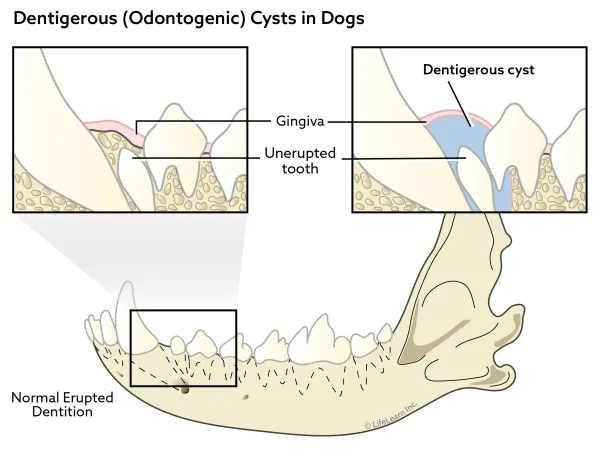
If a tooth is unerupted, it is at risk of forming a destructive dentigerous (odontogenic) cyst in the bone. Although unerupted or broken teeth can be painful, dogs rarely show obvious signs of pain. Dentigerous cysts, including and the original tooth must be removed carefully as to avoid compromising the bone, which can easily fracture during the extraction. Dentigerous cysts are preventable if unerupted teeth are addressed early in life.
Dental Pain in Dogs
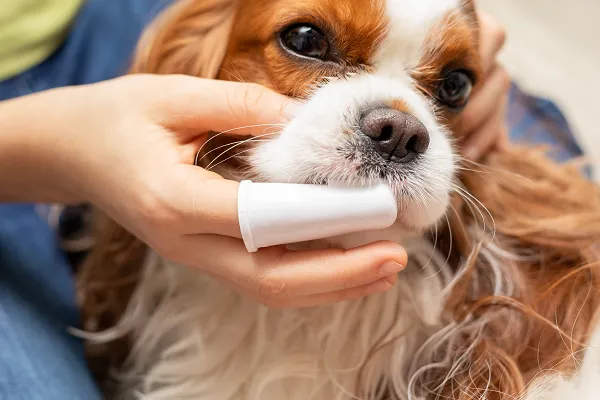
Dental pain may take on a variety of appearances, but often, a dog will not show any outward signs of pain. The only effective treatment for dental pain is to address the dog’s underlying dental disease. The best way to prevent dental pain is to ensure that your dog receives regular dental care through a home dental care plan and regular veterinary dental care.
Dental Disease in Dogs
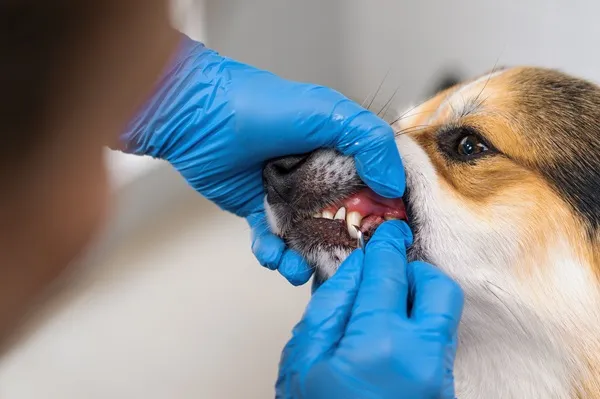
Dental disease is one of the most common medical conditions seen by veterinarians. The most common dental problems seen in dogs are periodontal disease and fractured teeth. This article discusses the most common dental diseases in cats, signs, diagnostic procedures, treatments, and preventive steps to keep a dog’s teeth healthy.
Dental Disease and Its Relation to Systemic Disease in Pets
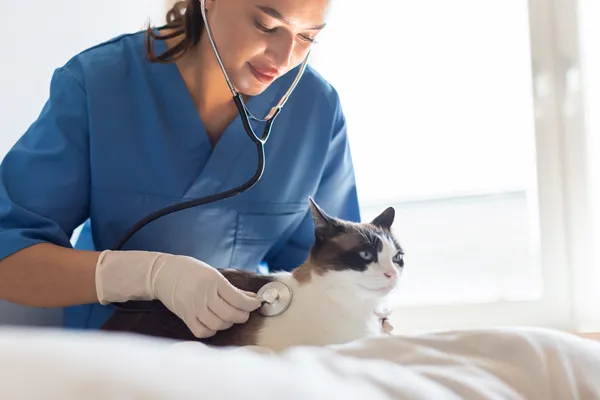
Dental disease, also known as periodontal disease, is a condition in which the tissues supporting the teeth become inflamed. When a pet develops dental disease, significant quantities of bacteria reside within the mouth and the oral tissues. These bacteria can enter the bloodstream and travel to other areas such as the liver and kidneys, causing distant or systemic effects.
Dental Cleaning in Dogs
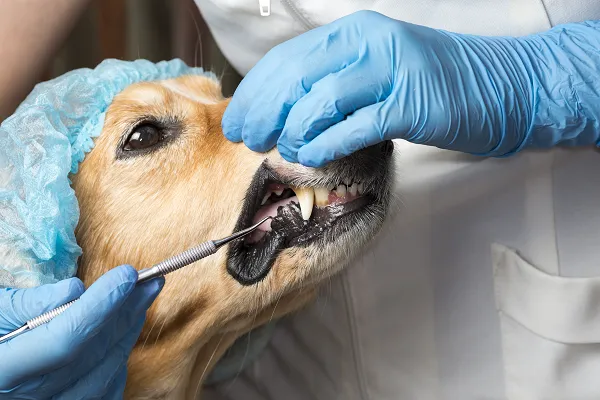
Plaque and tartar forms on teeth daily and, if allowed to accumulate, will cause progressive periodontal disease. Cleaning your dog’s teeth every day at home helps prevent plaque and tartar build-up. For proper dental evaluation and care, your dog must be safely placed under general anesthesia. The examination usually includes dental X-rays and probing to evaluate gum bleeding and periodontal pockets. Tooth scaling will be performed, using both hand and ultrasonic scalers, to remove tartar above and below the gum line. Removing plaque and tartar before disease occurs is the foundation of preventative dentistry.
Crowning Teeth in Dogs
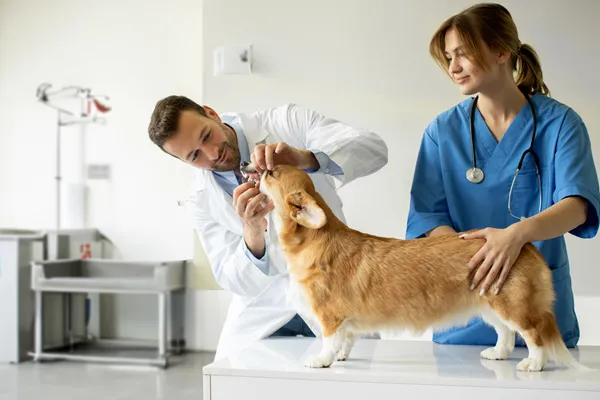
In veterinary dentistry, tooth repair or restoration that fully covers the tooth is called a crown. Crowns are used after root canal therapy or when enamel is not present due to wear or congenital disease. This article discusses how crowns are made and used in veterinary care. Under normal wear, and with special care, the crown should last for your dog’s lifetime.
Brushing Your Dog’s Teeth
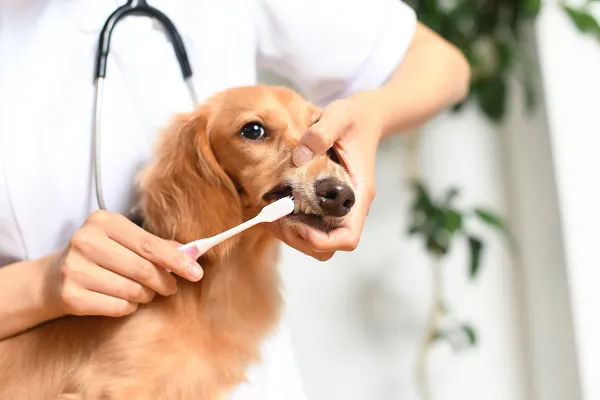
It is estimated that over 80% of dogs over the age of three have periodontal disease (infection of the tissues surrounding the teeth). Brushing three times a week is the minimum recommendation to help remove plaque and prevent tartar accumulation. To be successful at brushing your dog’s teeth, you must make it a positive experience for both of you. Do not use human toothpaste or baking soda. A list of dental products and diets that have been accepted by the Veterinary Oral Health Counsel can be found on www.vohc.org.
Veterinary Therapies – Combining Therapies

Combining alternative medical therapies, either with other alternative therapies or with more conventional treatments, may improve a patient’s health or speed the healing of disease. However, combined incorrectly, these same therapies have the potential to interfere with healing or cause serious health consequences. Veterinary practitioners trained in acupuncture, herbal therapy, and homeopathy are the best sources of information on what conventional and alternative treatments will combine well and which ones should not be used together.
Veterinary Homeopathy
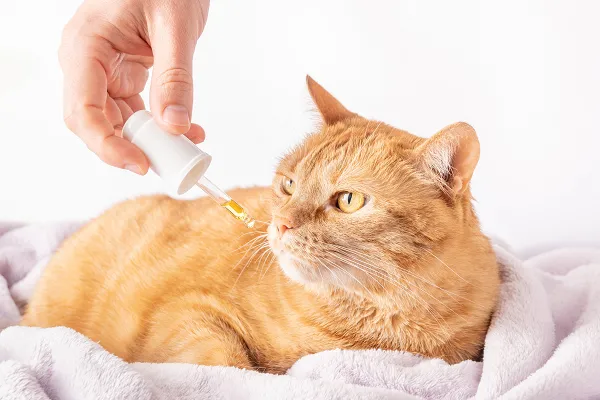
Homeopathy is a distinct philosophy of medicine that has its roots in eighteenth-century Germany, and subsequently spread to Europe, India, Australia, South America, the United States, and Canada. The underlying basis of homeopathy is the principle that “like cures like”: the idea that a substance given at a toxic dose can produce a certain set of symptoms, but given in much lower doses, it can cure the same set of symptoms, regardless of their perceived cause. As veterinary homeopathy gains acceptance, there are an increasing number of veterinarians in private practice who possess the necessary training and experience.

